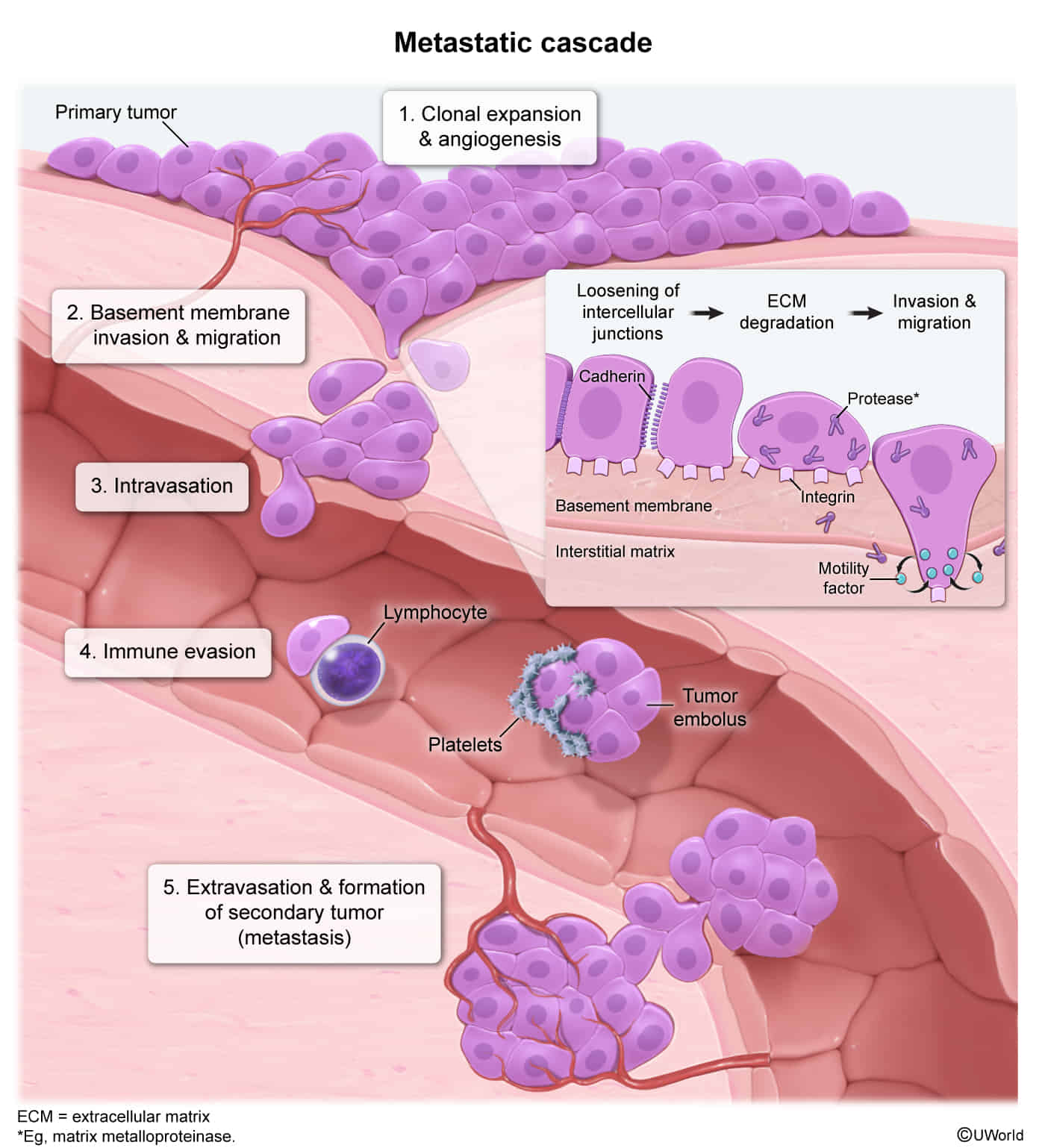
- Complex genetic changes are responsible for the selection of tumor subclones that are capable of metastasis.
- All metastases can be understood as arising from a two-part process: invasion of local extracellular tissue and dissemination and colonization.
- Invasion of extracellular tissue: loss of adhesion to the basement membrane → invasion through basement membrane → passage through extracellular tissue
- Loss of E-cadherin expression is associated with tumor metastatic potential.
- Overproduction of proteases such as collagenase and matrix metalloproteinases degrade the basement membrane and interstitial matrix. Neoplastic cells encounter various chemotactic and angiogenic factors in the newly exposed extracellular matrix.
- Autocrine signaling via tumor-produced cytokines and paracrine signaling by cleaved matrix components and extracellular growth factors stimulate tumor cell locomotion towards vasculature or lymphatics.
- Dissemination and colonization: encountering vascular or lymphatic routes → evasion of host defenses → implantation with distant tissue
- Host defenses destroy the majority of circulating cancer cells. Mechanisms to avoid this include tumor cell aggregation, formation of platelet-tumor complexes, and binding of active coagulation factors to form malignant emboli.
- Disruption of cellular adhesion molecules (laminins, cadherins) enables extravasation at distant tissues.
